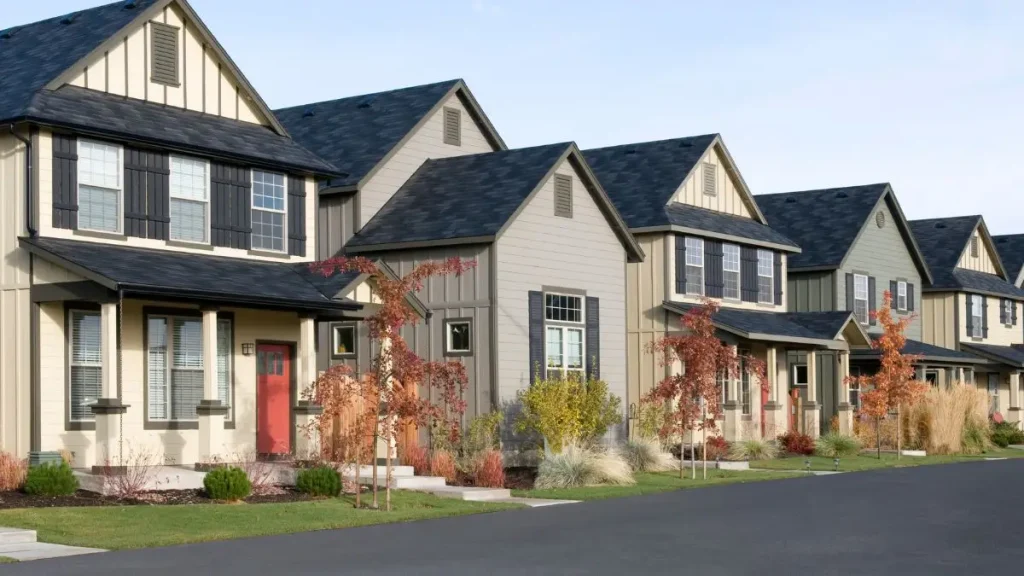California Passes New Law to Speed Up Housing Approvals
If you’ve been watching California’s housing mess unfold over the last decade, this moment might feel like a long time coming.
On July 1, a new law quietly flipped a switch on one of the biggest roadblocks to homebuilding in the state: the California Environmental Quality Act, or CEQA. Governor Gavin Newsom signed two bills—AB 130 and SB 131—that weaken parts of this once-untouchable law, giving housing projects a faster way forward.
CEQA has been the tool that stopped—or at least delayed—dozens of housing developments, sometimes for reasons that had nothing to do with the environment. All it took was one well-connected neighbor or a small opposition group to file a complaint, and everything could grind to a halt.
These new laws are supposed to change that. They don’t just tweak paperwork—they cut entire steps from the process for urban housing, child care centers, health clinics, and more.
And while critics are sounding alarms about weakened oversight, supporters—including developers, lawmakers, and even some frustrated residents—are calling this the most meaningful housing reform California has passed in decades.
So what exactly changed? And will this really make a difference in the lives of people trying to live, build, or invest in California?
We’re breaking it down in plain language—no legal jargon, no sugarcoating.
Let’s get into it.
What Is the New California Housing Law All About?
If you’re hearing all this buzz about California’s new housing law and wondering what it actually means — let me walk you through it, simply.
In July 2025, Governor Gavin Newsom signed two powerful bills — Assembly Bill 130 and Senate Bill 131 — that directly target the red tape that’s been choking housing development across California.
Here’s the core idea: these laws make it a lot easier to build homes, clinics, and other essential facilities without getting stuck in endless legal and environmental reviews under CEQA.
According to Newsweek, this law doesn’t just speed things up — it exempts many urban housing projects from CEQA altogether. That’s a massive shift from how things worked before, where even small developments could be delayed for years by lawsuits.
Based on recent estimates, the monthly cost of a median-priced home in 2025 remains significant—here’s a breakdown using a $431K price at a 6.85% rate.
What Is CEQA — And Why Has It Been a Problem?
If you’ve ever asked, “Why does it take so long to build anything in California?” — CEQA is usually part of the answer.
CEQA, or the California Environmental Quality Act, has been around since 1970. It was signed by then-Governor Ronald Reagan to protect the environment by forcing developers to study and share how their projects would impact nature.
Sounds reasonable, right?
The problem is, over time, CEQA became a tool for delay — not always for environmental reasons. People could file lawsuits to stop projects simply because they didn’t want new buildings in their neighborhoods. That’s where the term NIMBY (“Not In My Backyard”) comes in.
And if you’re a developer or investor, even a threat of a CEQA lawsuit could freeze your project for years — or kill it entirely.
Breaking Down the Two New Laws — AB 130 & SB 131

Let’s not sugarcoat it — these laws are complex. But I’ll break them down for you in plain English.
Assembly Bill 130: Targeting Urban Housing
Introduced by Assembly member Buffy Wicks, this bill does something bold — it removes CEQA review for most urban housing projects.
But there’s a catch. If a building is taller than 85 feet or qualifies as low-income housing, developers still have to pay union-level wages. That’s a tradeoff aimed at keeping labor unions on board.
So if you’re in a dense city like Los Angeles or San Francisco, and someone wants to build a mid-rise apartment building — this law speeds it up. No CEQA. No lawsuits. Just a much faster green light.
In fact, for the first time in 12 years, sellers now outnumber buyers in the U.S. housing market—a shift that reform advocates say demands urgent action.
Senate Bill 131: Beyond Housing
Introduced by Senator Scott Wiener, SB 131 broadens the impact. It gives CEQA exemptions not just to housing but also to nonresidential projects like:
- Childcare centers
- Health clinics
- Advanced manufacturing sites
These projects are often the lifelines of urban communities, and getting them through CEQA used to be a nightmare.
Now, with these two bills in place, California just cleared the runway for faster urban development — and that could ripple through your neighborhood sooner than you think.
We’re seeing early reactions and implementation updates roll in across planning forums and community WhatsApp groups. If you’re tracking housing changes too, it’s worth staying looped into real-time updates.
Why This Reform Matters Right Now?
Let me be real with you — this didn’t happen in a vacuum.
California is in the middle of a housing crisis. Home prices are outrageous, rent is brutal, and young people are fleeing the state in droves. CEQA wasn’t the only reason, but it was one of the biggest.
And Governor Newsom knew it.
He wanted this passed so badly, he reportedly threatened to block the entire state budget unless lawmakers approved the reforms. That’s how urgent it was.
During his press conference, Newsom said:
“This was too important to play chance.”
That kind of political pressure tells you something: this was more than just policy — it was a line in the sand.
And if you’re watching your rent go up or watching your kids move out of state because they can’t afford to live here — you understand exactly why this matters right now.
f you’re planning to buy this year, here’s what you should know about navigating the 2025 housing market—especially as policies like CEQA reform come into play.
How Will This Change What Gets Built in California?

Let’s talk impact — because laws mean nothing if they don’t change the ground reality.
With AB 130 and SB 131 now active, here’s what you can expect to see across California cities:
- Faster approvals for mid-rise apartments in dense urban areas
- Fewer delays from CEQA lawsuits that used to tie up projects for years
- More local clinics and childcare centers, especially in underserved areas
- Smaller developers entering the market (because legal costs go down)
Real estate experts like Dave Rand have already said that multiple stalled projects are being dusted off — because CEQA no longer stands in the way.
Before: A 2023 study by the Terner Center at UC Berkeley found the average CEQA litigation added 2 to 4 years to project timelines.
Now: Some projects could skip environmental review altogether if they meet the criteria — saving massive time and money.
What changes are you seeing (or hoping for) in your own city? Scroll down and share your thoughts—we’re reading every comment.
What This Means for Homebuyers, Renters & Developers?
- For Homebuyers: If the new laws trigger more housing development in cities like LA, San Diego, or Oakland, it could mean more inventory — and over time, a slight easing in prices.
- For Renters: Urban infill housing (smaller apartment buildings on unused city land) could expand. That means more units, less competition, and eventually lower rent pressure in hot zones.
- For Developers: This is the green light many were waiting for. With CEQA lawsuits off the table for many projects, mid-sized developers and nonprofits can now build without fear of multi-year litigation.
Final Thoughts
California has talked about fixing its housing crisis for decades. With these new laws, it’s finally doing something big — not just talking.
By cutting through CEQA’s thicket of red tape, AB 130 and SB 131 could reshape how fast cities build, who gets to live where, and how the state handles growth. But the impact won’t come overnight.
What happens next depends on implementation, local leadership, and whether developers truly seize the moment. One thing’s certain: if this doesn’t work, the pressure to go even further will only grow.
Want to stay updated on U.S. housing trends, policy shifts, and what they mean for your next move? Browse our full Government & Policy section.
Disclaimer: This article is for informational purposes only and does not constitute legal or financial advice. All legislative details referenced are based on currently available public information as of July 2025. Please consult official state sources or legal experts for specific interpretations of the law.


